25 July 2023
It was a miserable night. I couldn’t get comfortable with the drain insertion point. It felt like I had burned myself in that area. Not only that but I’m still very sore in the axillary region. There seems to be a lump there in the muscle tissue.
I finally couldn’t stand it any more so I removed the bandage from around the drain insertion.
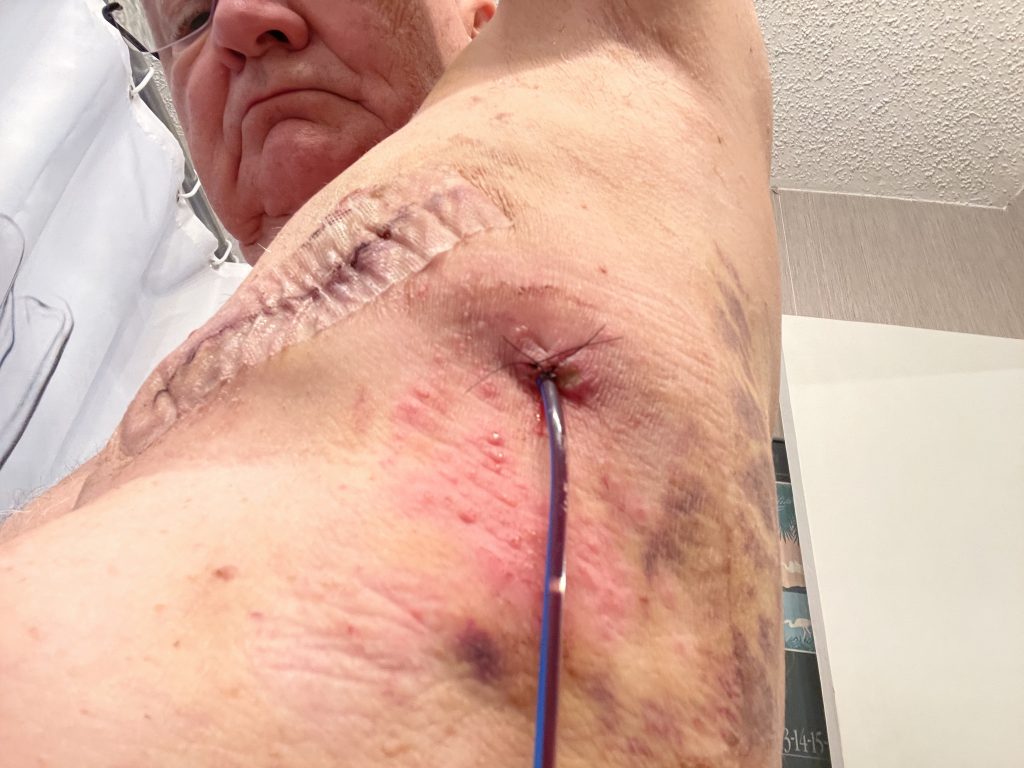
I seem to have developed a rash around the drain area. In the photo above you can see the sutures that hold the drain in. I’m still bloodying tee shirts every day. I cleaned the area with rubbing alcohol and then put Neosporin on the rash and replaced the gauze and tape. I then covered it with Press and Seal to semi-waterproof it. It already feels much better.
I’m still donating 30 milliliters of blood every morning. It’s still dark red with no indication that it’s clearing. Looks like I’ll be forced to have the drain for a third week unless something drastically changes in the next few days.
I’ll call the Nurse Navigator later today and ask if they want me to come in and let them check out the rash. If not, I may go back to bed and sleep awhile since I was up at 4 am this morning with the burning.
Since I was up, I ate breakfast (bananas, strawberries, blueberries, and yogurt) and then was out the door for my morning walk at 6 am. It was still pitch black outside. This was the first time I got to photograph Riverland Road in the dark since the re-vamping of the road. It’s taken a couple of years but the wait was worth it.
Riverland now has two bike lanes (left and right side) and even better, reflectors have been spaced all along the road bed. The reflectors light up from either car headlights or from street lights and show you the edge of the bike lane.
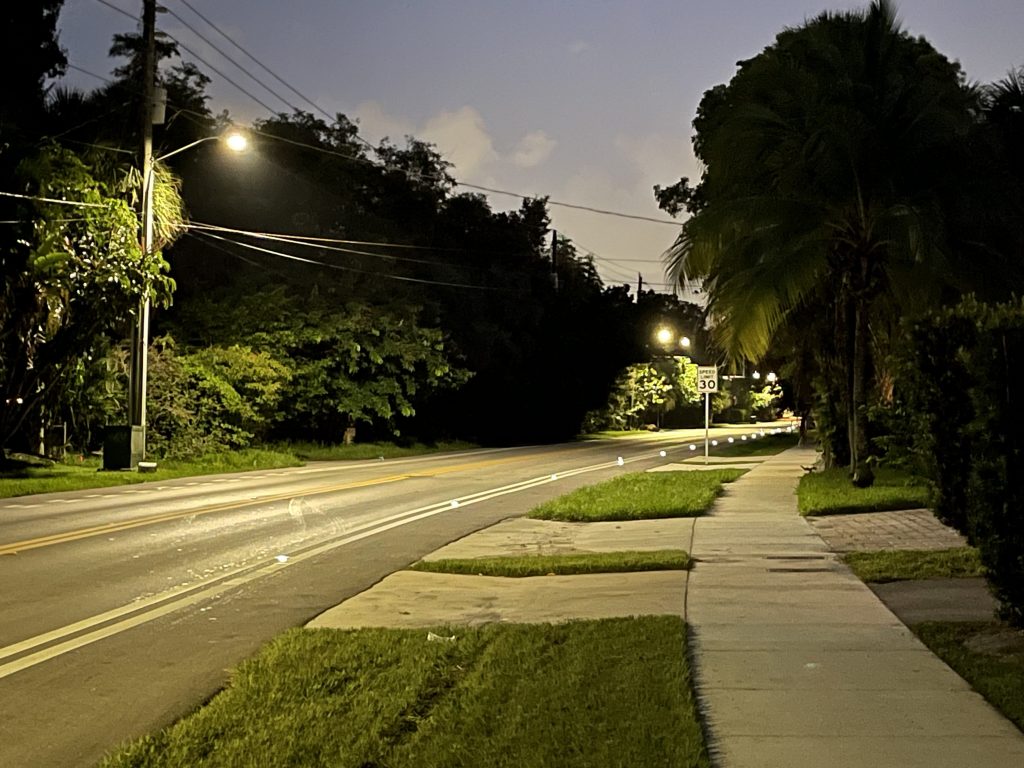
Even better, although not shown in the photograph, is the center line has yellow reflectors. Where you find a fire hydrant, the center line has a blue reflector so the fire department can easily determine the location of fire hydrants.
Even with street lights, Riverland used to be a very dark street at night. With new street lights, bike lane reflectors and center lane reflectors, there’s no reason for anyone to accidentally drive up on the swale. However, if you look at the front center of the above photograph, you can see where someone did manage to do that.
I don’t typically drive Riverland at night (nor anywhere else that much) but it certainly makes it a pleasant experience when I do. You tax dollars at work!
__________
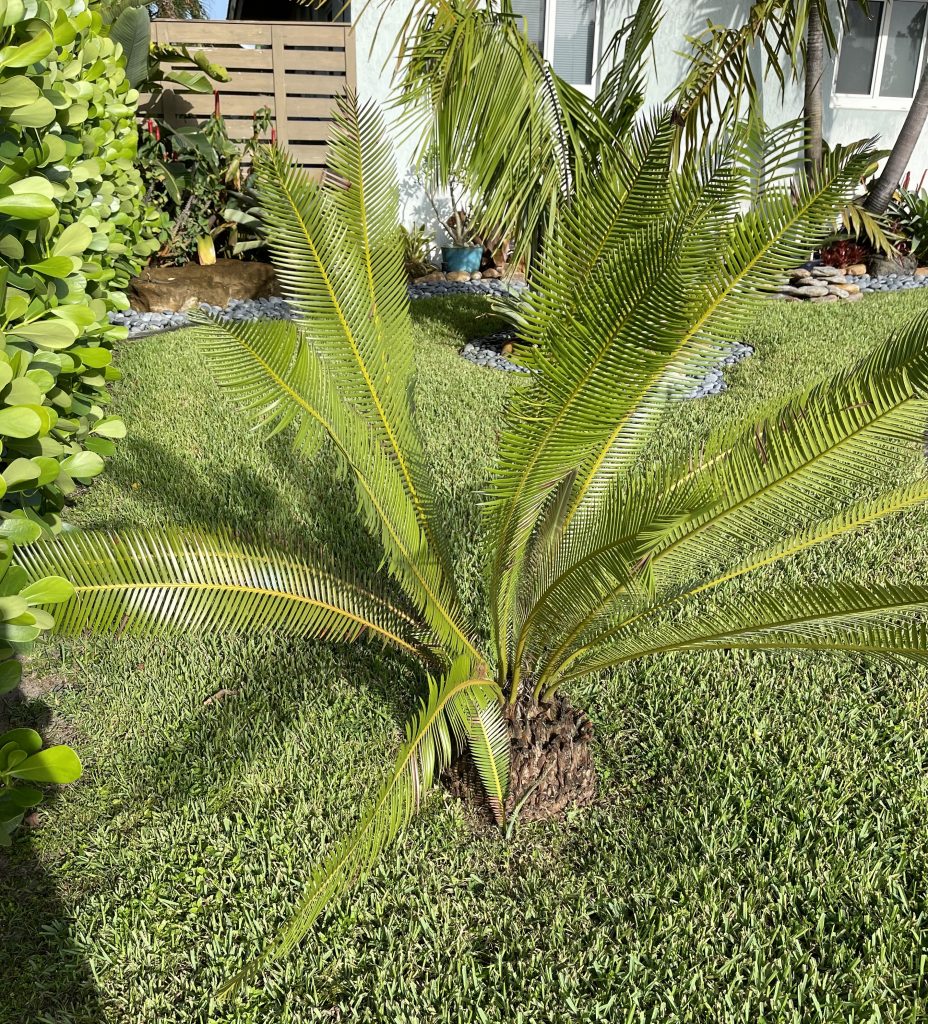
This plant belongs to my favorite group of plants, the cycads. They are considered extremely primitive and are related to the gymnosperms (think pine trees). They have fern-like characteristics (look at the fronds) but unlike ferns, produce seeds, not spores.
Cycads are dioecious which means there are male and female plants. Both produce cones. The male cones produce pollen and the female cones produce seeds when fertilized by the pollen from males.
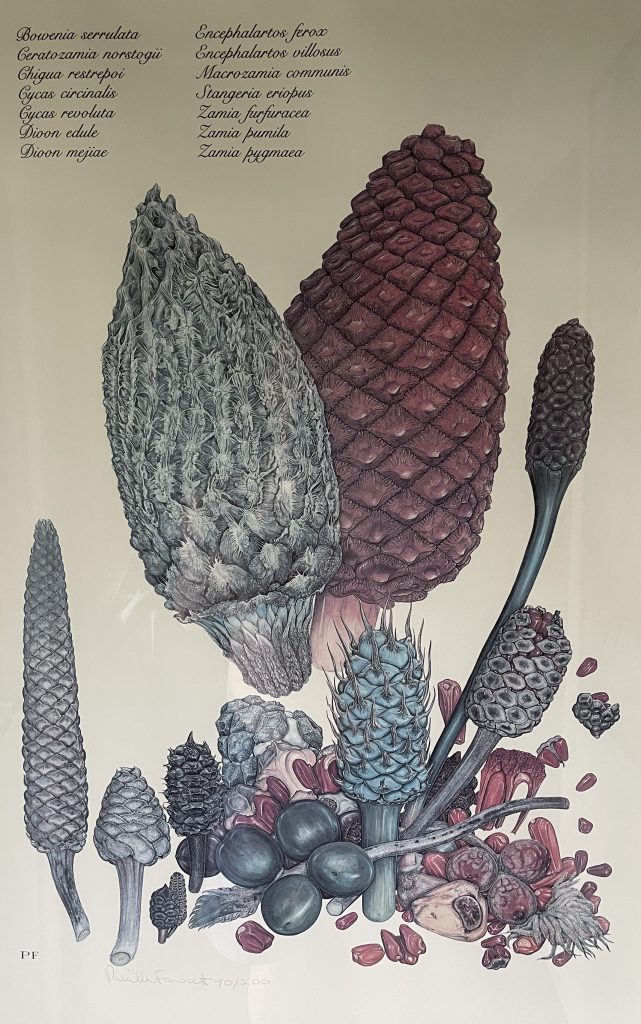
Dioon is a native of Mexico and Central America and is often planted as an ornamental in South Florida. A lot of people confuse them with palm trees, and indeed, one cycad commonly found down here is misnomered the Sago Palm (the species Cycas revoluta).
At one time, scientists considered the cycads to be wind pollinated, a very primitive form of pollination. Let’s face it, if the wind is blowing the wrong direction the day you start releasing pollen, your genes aren’t getting passed on that year.
It was Fairchild Tropical Garden in Miami that clued the world in on insect pollination of cycads. One of the grounds keepers noticed the native coontie (Zamia integrifolia) had beetles crawling all over the female cones. The Garden was later able to demonstrate that indeed, some cycads are pollinated by insects – considered a more advanced trait in plants.
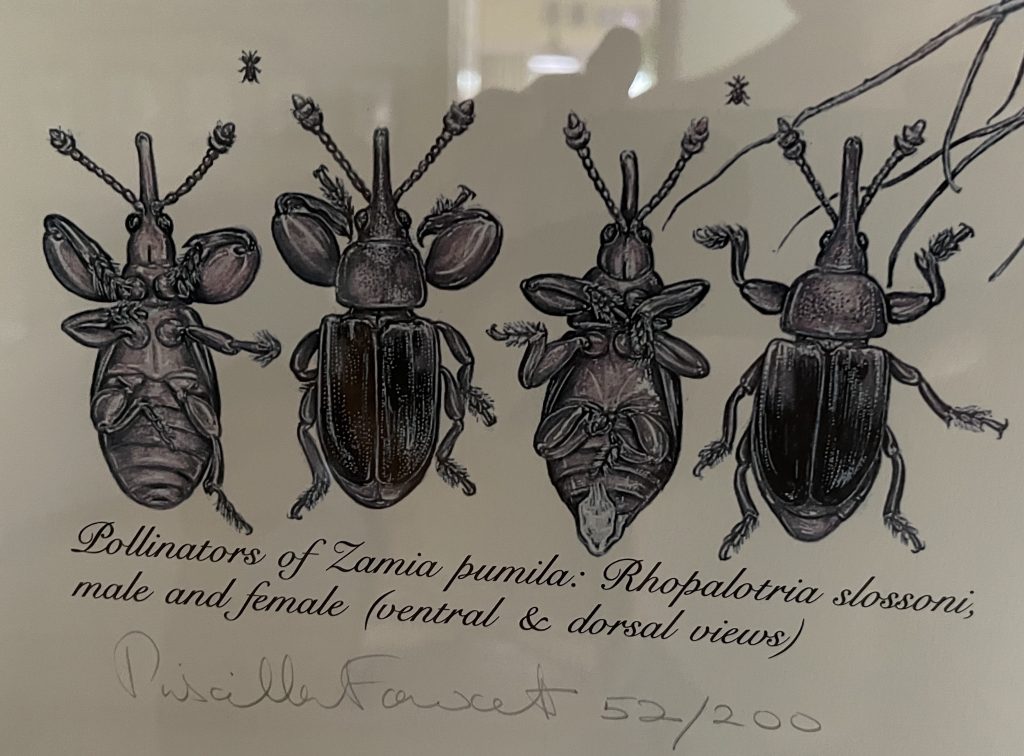
You find most cycads in South Africa and Australia although there are some in the Americas. Our only native species in the U.S. is coontie (Zamia integrifolia). Native Americans and then early settlers used the corms (short, vertical, underground stems) as a flour substitute.
The female cones of Zamia produce seeds with a fleshy covering that is carcinogenic so you have to be careful when handling the female cones. The red covering of the seeds can be quite striking.
The rarest plant in the world is a cycad of the species Encephalotos woodii. There is only one known plant in the wild in South Africa and it’s a male. Good luck with passes on those genes! All others of the species are simply clones.
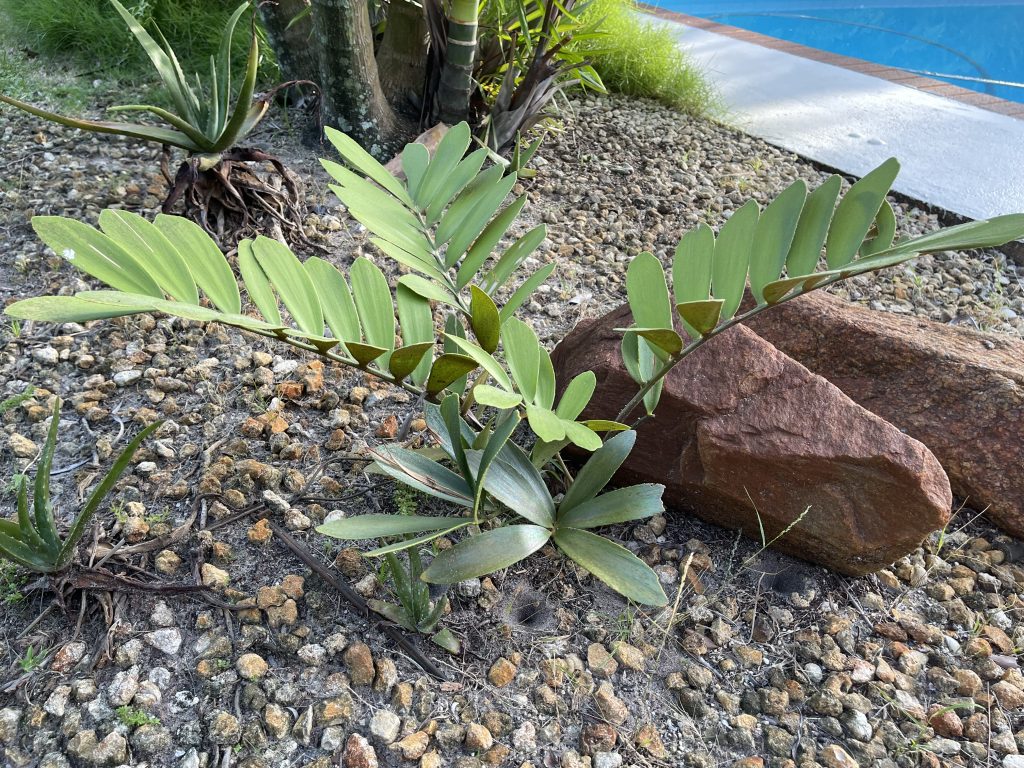
The cardboard palm pictured above is a little misleading. It can grow quite large – to the point of over 6 feet tall. I purchased one when I first moved to Florida and kept moving the potted plant with me where ever I moved. When I finally settled, I planted it in the ground. It took over the area in front of my front window. I finally had to remove it (no easy task) so I’m glad to have this one growing in my back yard.
Stay tuned!
